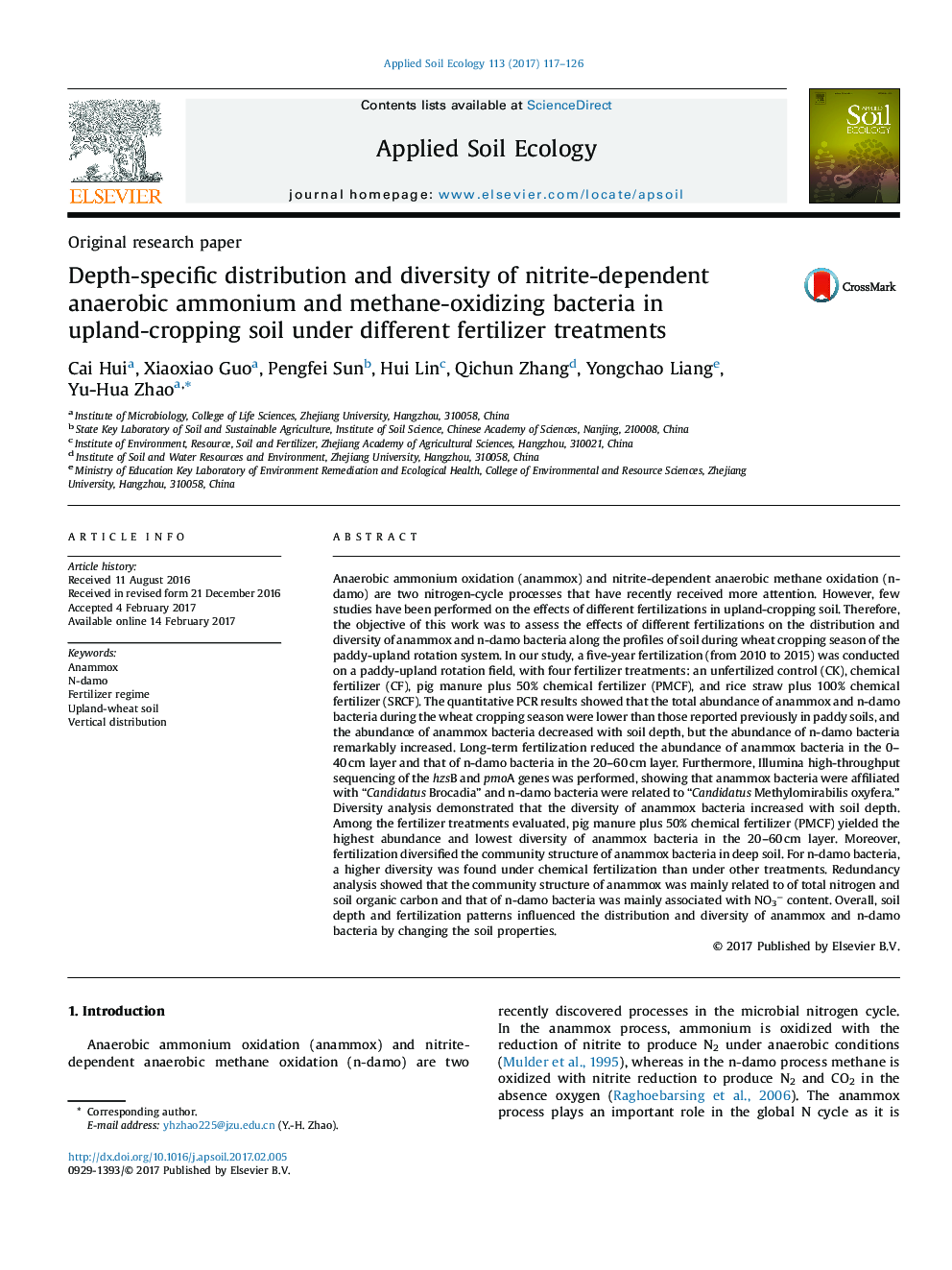| کد مقاله | کد نشریه | سال انتشار | مقاله انگلیسی | نسخه تمام متن |
|---|---|---|---|---|
| 5742742 | 1617770 | 2017 | 10 صفحه PDF | دانلود رایگان |
- The distributions of anammox and n-damo bacteria are studied in upland-wheat soil.
- Fertilization decreases anammox and n-damo bacterial abundance.
- The diversity of anammox bacteria increases with soil depth.
- Fertilization diversifies the vertical distribution of anammox bacteria.
- Soil pH and NO3â affect the competition relationship of anammox and n-damo bacteria.
Anaerobic ammonium oxidation (anammox) and nitrite-dependent anaerobic methane oxidation (n-damo) are two nitrogen-cycle processes that have recently received more attention. However, few studies have been performed on the effects of different fertilizations in upland-cropping soil. Therefore, the objective of this work was to assess the effects of different fertilizations on the distribution and diversity of anammox and n-damo bacteria along the profiles of soil during wheat cropping season of the paddy-upland rotation system. In our study, a five-year fertilization (from 2010 to 2015) was conducted on a paddy-upland rotation field, with four fertilizer treatments: an unfertilized control (CK), chemical fertilizer (CF), pig manure plus 50% chemical fertilizer (PMCF), and rice straw plus 100% chemical fertilizer (SRCF). The quantitative PCR results showed that the total abundance of anammox and n-damo bacteria during the wheat cropping season were lower than those reported previously in paddy soils, and the abundance of anammox bacteria decreased with soil depth, but the abundance of n-damo bacteria remarkably increased. Long-term fertilization reduced the abundance of anammox bacteria in the 0-40Â cm layer and that of n-damo bacteria in the 20-60Â cm layer. Furthermore, Illumina high-throughput sequencing of the hzsB and pmoA genes was performed, showing that anammox bacteria were affiliated with “Candidatus Brocadia” and n-damo bacteria were related to “Candidatus Methylomirabilis oxyfera.” Diversity analysis demonstrated that the diversity of anammox bacteria increased with soil depth. Among the fertilizer treatments evaluated, pig manure plus 50% chemical fertilizer (PMCF) yielded the highest abundance and lowest diversity of anammox bacteria in the 20-60Â cm layer. Moreover, fertilization diversified the community structure of anammox bacteria in deep soil. For n-damo bacteria, a higher diversity was found under chemical fertilization than under other treatments. Redundancy analysis showed that the community structure of anammox was mainly related to of total nitrogen and soil organic carbon and that of n-damo bacteria was mainly associated with NO3â content. Overall, soil depth and fertilization patterns influenced the distribution and diversity of anammox and n-damo bacteria by changing the soil properties.
Journal: Applied Soil Ecology - Volume 113, May 2017, Pages 117-126
